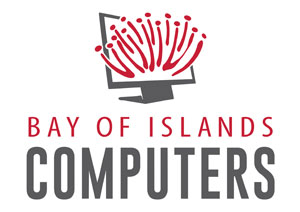
POP or IMAP, what one should I choose?
When setting up an email account, it’s important to choose the right email protocol that suits your needs. Two common protocols you might encounter are POP (Post Office Protocol) and IMAP (Internet Message Access Protocol). In this blog post, we’ll explore the differences between POP and IMAP, their advantages, and considerations to help you make an informed decision, especially when setting up email on multiple devices.
POP (Post Office Protocol):
POP is an older email protocol that has been widely used for many years. With POP, your email client downloads messages from the mail server onto your device. Here are some key features and considerations of POP, particularly for phone users:
Offline Access: One advantage of POP is that it allows you to access downloaded emails even without an internet connection, which can be helpful when you’re on the go and have limited connectivity.
Local Storage: POP downloads messages onto your device, consuming local storage space. It’s important to regularly manage and delete unnecessary emails to avoid storage issues on your phone.
Device-Specific: POP is device-centric, meaning that each device accessing the email account will have its own set of downloaded messages. This lack of synchronization between devices can cause inconsistencies if you switch between multiple devices, including your phone.
IMAP (Internet Message Access Protocol):
IMAP is a more modern and widely adopted email protocol that provides a different approach to email management. Unlike POP, IMAP keeps your emails stored on the mail server, and your email client acts as a remote interface to access and manage those messages. Let’s explore the advantages and considerations of IMAP, especially when setting up email on multiple devices:
Synchronization: IMAP synchronizes your email across multiple devices, including your phone, ensuring that any changes made to your email (read/unread status, folder organization, deleted emails) are consistently reflected across all devices. This ensures a seamless email experience, whether you access your account on your phone, computer, or other devices.
Offline Access via Cached Data: One advantage of IMAP is that it allows you to access downloaded emails even without an internet connection via your email client (Outlook, EmClient, and Thunderbird to name a few) using the email clients cache, which can be helpful when you’re on the go and have limited connectivity.
Storage Efficiency: With IMAP, your emails remain on the server, optimizing local storage on your phone. You can access your complete email history without worrying about storage limitations, making it convenient for users who receive a high volume of emails or have limited phone storage.
Multi-Device Access: IMAP is designed to provide consistent access to your email account across multiple devices, including your phone. Whether you switch between your phone, tablet, or computer, you’ll have access to the same set of synchronized emails, folders, and organizational settings.
Conclusion:
When setting up email, especially on multiple devices, choosing the right protocol is crucial for a seamless and consistent email experience. While POP offers offline access and device-specific storage, IMAP provides synchronization, storage efficiency, and multi-device access. Considering the needs of users who primarily use their phones for email, we recommend using IMAP for setting up email. By choosing IMAP, you’ll enjoy a seamless email experience across all your devices, efficient storage utilization, and the convenience of accessing your emails from anywhere, ensuring you stay connected and productive on the go.



